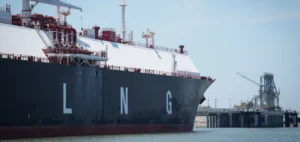The new terminal will have “a capacity of at least five billion square meters per year and is expected to be commissioned in the fourth quarter of 2023,” the Ministry of Economy said in a statement. It will be carried out by a conglomerate of companies in the sector, composed of the French Engie, the Belgian TES and the German Eon. This government-leased FSRU (floating regasification unit) vessel will be installed in the North Sea port of Wilhemshaven, where a similar facility is already scheduled to come on stream this winter.
“We are reducing dependence on Russian gas by rapidly building new infrastructure.”
explained the Minister of Economy, Robert Habeck, at a press conference.
This is the fifth FSRU ship installation project announced by the government since the war in Ukraine began in late February. In addition, there are two other projects carried out by private companies.
The first two are scheduled to begin operations in December and will help mitigate the risk of an energy crisis in Germany this winter.
These efforts “will allow, if all goes well (…) to pass the winter without too many disruptions, but do not be mistaken, it is not a signal of relaxation, there is still a great tension and the need to save quantities of gas,” warned Friday Habeck.
Europe’s largest economy was 55% dependent on Russia for its gas imports before the war in Ukraine.
Regasification terminals allow the import of natural gas transported by sea in liquid form. In contrast to other European countries, Germany had no such equipment either at sea or on land. These new terminals should enable Berlin to diversify its suppliers, by increasing its orders from the United States, Qatar and Canada, which are major LNG producers.
A budget of almost three billion euros has been made available by Berlin for the rental of FSRU floating units. The LNG tankers are expected to be berthed in Brunsbüttel and Stade, not far from Hamburg, as well as in the city of Lubmin on the Baltic Sea.
Together, the private and public projects will cover “about a third” of Germany’s total gas demand, according to the ministry.





















